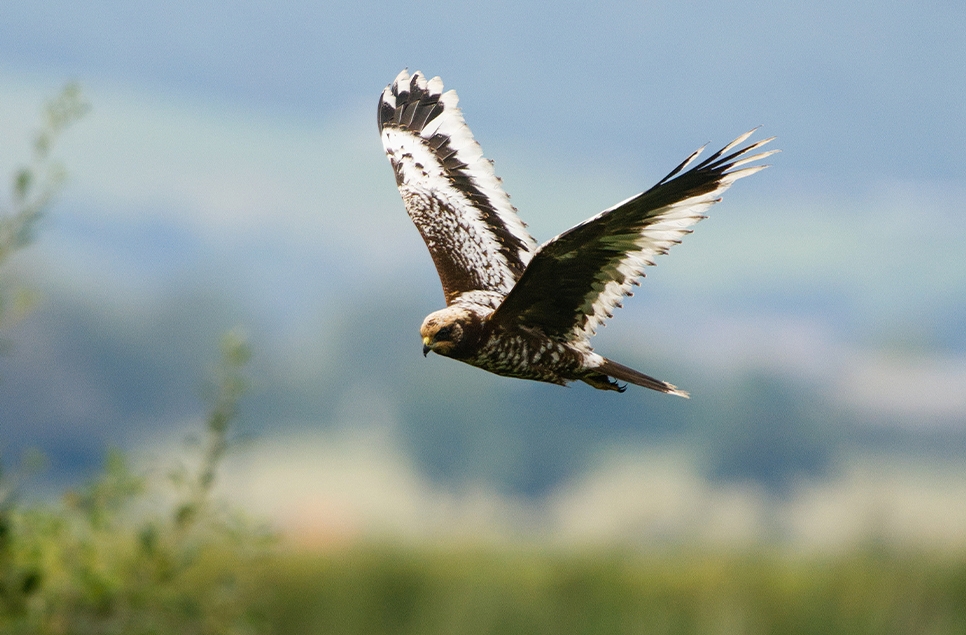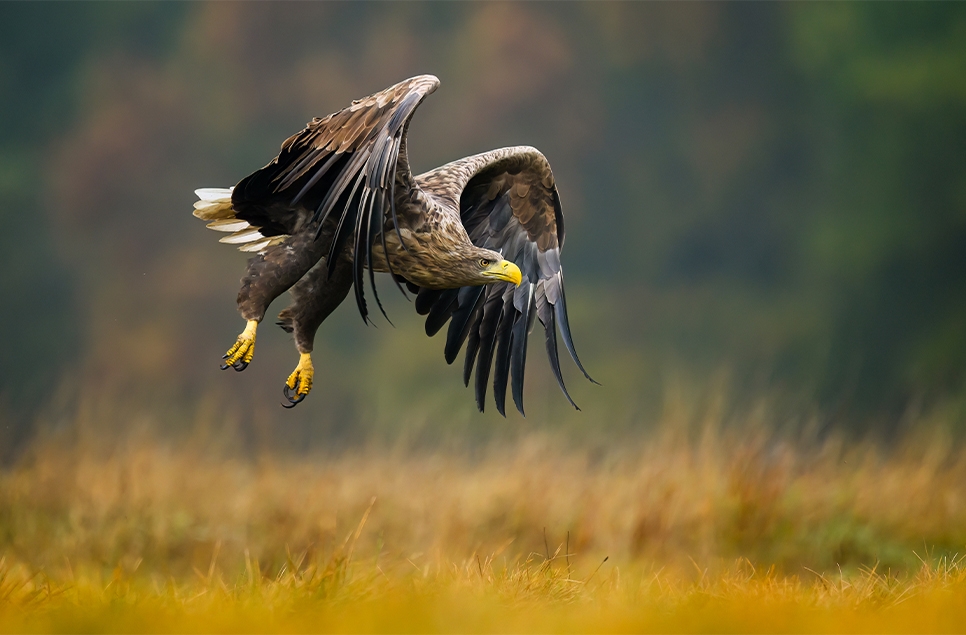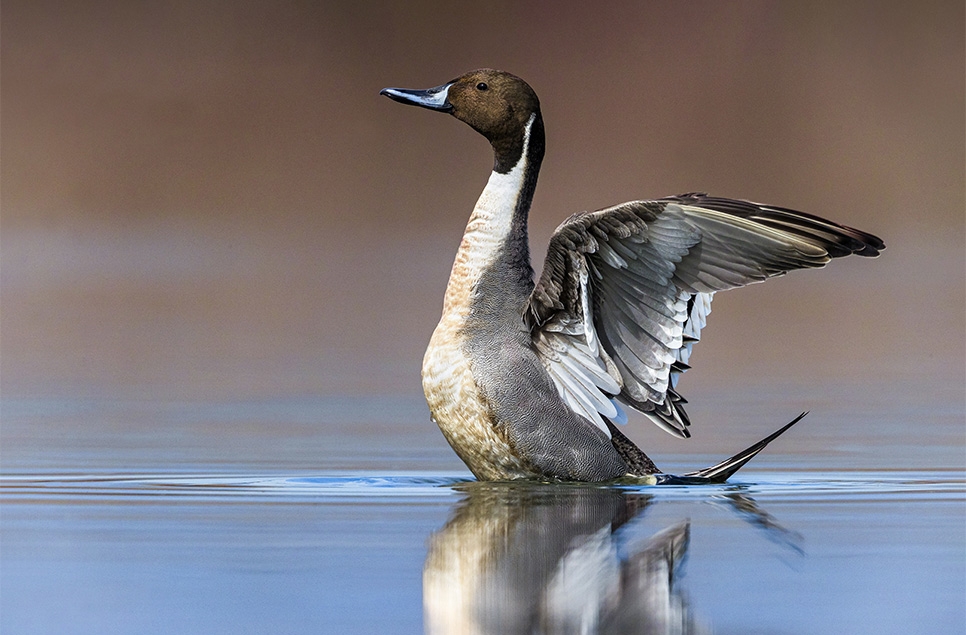A spotlight on wetland wildlife - January 2021
We’re back with our first reserve roundup of 2021 and we find ourselves well and truly in the middle of winter. If you've missed our reserves, here's your chance to enjoy some winter wildlife virtually.
We’re back with our first reserve roundup of 2021 and we find ourselves well and truly in the middle of winter. Days are short, everyone is cold and there’s often been snow on the ground. This means that wildlife at our sites are doing their best to keep fed, warm and safe – they’ve picked a good spot in our wetlands! Let’s see what they’ve been up to…
Many Bewick’s swans have been visiting the Rushy Pen at WWT Slimbridge. It’s the perfect place to spend the night, out of the reach of predators.
Five more minutes... Total of 80 sleepy Bewick’s Swans on the Rushy this morning #GlosBirds pic.twitter.com/0VH05RmWka
— Slimbridge Sightings (@slimbridge_wild) January 13, 2021
Once they’ve been fed by Reserve staff, it’s time for a good old stretch…
Bewick's Swan- video shot from the Rushy Hide this morning, shortly after the feed. At least 77 present on the lake along with (unusually) a Dark-bellied Brent Goose with the Canada Goose flock. pic.twitter.com/ssontjeDEt
— Slimbridge Sightings (@slimbridge_wild) January 24, 2021
It’s a chilly time for everyone – even the sparrowhawks at Llanelli need to fluff themselves up every once in a while to keep warm!
Here's a quick pic to brighten up your day - a puffed up sparrowhawk spotted resting just by the cafe. Bless!
— WWT Llanelli Wetland Centre (@WWTLlanelli) January 13, 2021
📸 by Nigel Williams#birding #WALES #RainyDay pic.twitter.com/o3ca2ySZBb
Another creature keeping itself warm this winter is the December moth – amazing that they are still on the wing but you can see that they are well adapted to the chill with their fluffy coats.
This fluffy moth was recently spotted @WWTCastleEspie🤩 It's called a "December Moth" but amongst the "moth-ers" here it's simply referred to as "Mr Fluffy" 😂 As the moth flies late in the year it needs its fluffy coat to keep it warm on those cold days and nights ❄️@BCNI_ pic.twitter.com/4CktQLcCAN
— WWT Castle Espie (@WWTCastleEspie) January 26, 2021
The camouflaged snipe is well suited to foraging during winter, melting in with its grassy surroundings – but it proved no match for our reserve staff and a camera!
Did you know that a snipe long bill has a flexible tip that’s full of nerves? This means they are able to feel underground in the mud, helping them locate all the food they can. Once found, they will swallow their catch whole. #wildlifephotography #Winterwatch #wetlands pic.twitter.com/sGQECpwKWb
— WWT London Wetland Centre (@WWTLondon) January 9, 2021
What says mid-winter better than swans in the snow? Naturally, these guys are just fine to sit it out, actually seeming to be able to keep warm on their own accord!
Found some very clear 'swan ovals' left on the path after snow fell on the roosting Mute Swan herd, body heat no doubt helping to melt it. Zoom in, head and tail ends are clearly discernible by a small mound of central heating waste!😁(MJM) @WWTSlimbridge #Winterwatch pic.twitter.com/KCGhNKFqqO
— Slimbridge Sightings (@slimbridge_wild) January 24, 2021
It may be pretty, but too much snow and ice and the wildlife will start to suffer – these waders needed to find open water to feed, which we make sure they always have.
The waders (Lapwing, Golden Plover, Ruff and Dunlin) gathered at any open water they could find, taken earlier this morning. @WWTSlimbridge pic.twitter.com/K7axCajx9x
— Slimbridge Sightings (@slimbridge_wild) January 24, 2021
Small mammals are rarely featured in the round-up because well, they’re small and rarely seen! Field voles will have been struggling through this cold weather as they don’t hibernate, and in turn are key food for predators like larger mammals, raptors and even birds like herons.
This field vole was feeding on our reedbed walk. It is one of the most common animals at Martin Mere but is not seen very often. Winter is the best time of year to see field voles, as, with a limited food supply, it has to forage more during daylight hours, as well as at night. pic.twitter.com/kPrIcUFbgR
— WWT Martin Mere (@WWTMartinMere) January 19, 2021
Using trail-cameras at night time is a great way to see what is happening on our reserves. Can you spot the otters in this clip from Steart Marshes?
... and then there were three ...
— WWT Steart Marshes (@WWTSteart) January 19, 2021
A big thanks to volunteer @lorrainebirder for scanning through over 2000 images to discover it was actually 3 otters visiting last Friday! @SomersetOtter @robsrw @tuinz07 @FionaJo83346188
Enjoy the clip and please stay safe, stay local. pic.twitter.com/f8pTWqigD8
And we couldn’t help but share this trail-cam footage from December – such bold mammals at Slimbridge!
Some good news this Christmas! Two Otters have been filmed on our remote cameras, first at a favoured sprainting spot and then heading in to our new paleochannel! Even a Fox came to see what the excitement was about. @WWTSlimbridge #WetlandRestoration #WetlandsAreAmazing pic.twitter.com/qidJYWgmV5
— Slimbridge Sightings (@slimbridge_wild) December 26, 2020
Poor daytime weather can give better cover to predators than a clear night can – the mist allowed this fox the opportunity to get very close to this flock of teal.
Its a foggy one out there this morning and many birds are frozen in to small pockets of water as they try to keep one eye and ear on what is lurking in the murk 🔊 @WWTSlimbridge pic.twitter.com/kW4Yjat1AD
— Slimbridge Sightings (@slimbridge_wild) January 7, 2021
Staying with the ducks, this pair of scaup have been spending the winter at Castle Espie. They look a little like tufted ducks but notice the male has a light-grey back.
This week the reserve team spotted a pair of Scaup on the Saline Lagoon diving together in search of food 😍 Scaup rarely breed on these shores but they migrate here during Winter from Iceland, northern Europe and western Siberia #wetlands #conservation #wintermigration pic.twitter.com/h6Z6nptxVT
— WWT Castle Espie (@WWTCastleEspie) January 16, 2021
When conditions are just right, a winter sunset over our wetlands is a spectacular sight. It’s views like these that we all need right now.
Incredible sunset across the #Severn Vale #Gloucestershire at dusk today @WWTSlimbridge @Slimbridge_wild pic.twitter.com/4VS4cqVMqX
— Martin McGill (@MJMcGill_Anser) January 21, 2021
It also brings another dimension to those previously snoozy swans…
Beautiful sunsets over @WWTSlimbridge this evening after a great days work, couldn't help get the Swans in, they make the view better 😍🥰 #ClosedButStillCaring #WetlandWellbeing pic.twitter.com/lEdnXTN7xb
— Bethany McGuire (@McGuireBethany) January 21, 2021
A quintessential sound of the Fens in winter, these beautiful swans are flying out from their roost sites to the fields for breakfast at dawn. What an experience!
For anyone living in the fens this will be a familiar sight and sound in the winter. But for members and supporters further away we know you will be missing spectacles like this at the moment. The daily flights of whooper and Bewick's swans from Ouse Washes to nearby fields. pic.twitter.com/htN1hvJ145
— WWT Welney (@WWTWelney) January 18, 2021
And staying with the wild swans, this large whooper family have turned up at Caerlaverock. Incredible that they manage to stick together as a family unit, all the way from Iceland.
One of our Caerlaverock named swans, 'Charners' arrived this morning with an unknown mate and 5 cygnets! This is the largest whooper swan family we have seen this year! pic.twitter.com/z1rPMZJ8BG
— WWT Caerlaverock (@WWTCaerlaverock) January 15, 2021
Learn more about swans
Everything you ever wanted to know about our migratory swan species
Find out moreWe’ll be back at the end of February with another round-up, when winter will nearly be done with us and spring is just around the corner – we might even be starting to say good bye to some of our winter visitors. In the meantime, be sure to keep up-to-date with wildlife news on all centres social media channels. You can take a look at what is going on for yourself on our webcams:


